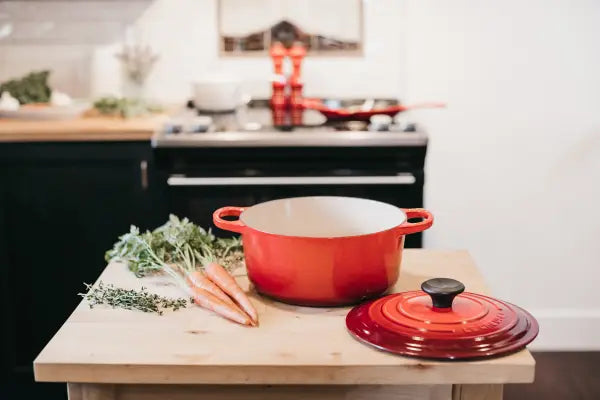Iron-rich first foods for babies: when to start, what to serve, and why it matters

One of the first nutrients we hear about as parents is iron. With so many different vitamins, minerals, and macronutrients to consider when it comes to your baby’s nutrition, you may be wondering why there is so much focus on this one mineral.
Babies are born with a natural store of iron, but by around six months, those reserves begin to diminish. That’s where iron-rich first foods come in. Offering iron early and regularly helps support your baby’s brain development, growth, and energy.
Today we’ll break down why iron is so important, how much your baby needs, and most importantly, how you can confidently and easily serve iron-rich foods in ways that are safe, nourishing, and enjoyable.
Why iron really matters in your baby’s first foods
Iron plays many roles in your baby’s body, but its primary function is helping carry oxygen in the blood to every cell.
Without enough iron, babies can develop iron-deficiency anemia, which may lead to:
-
Fatigue or low energy
-
Delayed growth
-
Irritability
-
Difficulty focusing or learning later on
-
Increased risk of infections
The first two years of life are a period of rapid brain development. Iron fuels that process, supporting memory, attention, and problem-solving skills. Making sure your baby gets enough iron now lays a foundation for healthy development in the years ahead.

How much iron your baby needs (and when to start offering it)
The amount of iron your baby needs depends on their age.
0–6 months: nature’s iron stores still do the job
Babies typically don’t need extra iron from food yet. They are born with natural iron stores, built up during pregnancy, and those reserves—combined with breast milk or iron-fortified formula—usually meet their needs during this stage.
For exclusively breastfed babies, iron supplementation may sometimes be recommended earlier if the baby was born prematurely, had a low birth weight, or if the birthing parent’s iron levels were low in pregnancy. Always check with your pediatrician if you’re not sure.
7–12 months: when iron-rich first foods take the lead
Once babies reach about six months, those natural stores start to run low, and their iron requirements jump significantly to 11 milligrams per day.
This is why making iron-rich foods some of the first foods for babies you introduce is so important. This sharp increase reflects how quickly babies are growing and how much their developing brains rely on iron.
While breast milk and formula still provide nutrition, iron-rich foods now need to play a starring role.
Best sources of iron for babies: Heme vs non-heme explained
Not all iron is created equal. There are two main types:
Animal-based sources (heme iron that’s easy to absorb)
Found in foods like meat, poultry, and fish. This type is absorbed more efficiently by the body.
Plant-based sources (non-heme iron boosted with vitamin C)
Found in beans, lentils, tofu, nuts, seeds, spinach, kale, peas, whole grains, and fortified cereals.
The body absorbs non-heme iron a little less effectively, but pairing it with vitamin C-rich foods (like fruit or certain vegetables) helps boost absorption.
Both are valuable, and offering a mix is a great way to make sure your baby gets other key nutrients as well.

Iron-rich first foods for babies that fit your family’s table
Here’s a list of iron-rich foods that are baby-friendly and can be introduced early.
Animal-based options babies tend to enjoy
-
Pureed beef, lamb, or chicken
-
Turkey or chicken meatballs (mashed or minced for texture)
-
Salmon or other flaky fish (boneless and cooked until soft)
-
Eggs (scrambled, thin omelettes, or baked into foods)
Plant-based favorites packed with iron
-
Lentils and beans (pureed or mashed for younger babies, whole and soft for older ones)
-
Tofu (cubed, mashed, or pan-fried)
-
Chickpea hummus (spread thinly on toast or offered on a spoon)
-
Fortified infant cereals (mixed with breast milk or formula)
-
Dark leafy greens like spinach, collard greens, or kale (pureed and mixed into other foods)
-
Nut butters (like peanut or almond butter, thinned with breast milk, formula, or water)
How to serve iron-rich foods safely and confidently
Iron-rich foods can be part of your baby’s meals from day one of starting solids. The key is preparing them in safe, age-appropriate ways.
Start with soft textures and work your way up
For babies just starting solids (around 6 months), think purees, mashes, or very soft finger foods.
As your baby grows and develops their pincer grasp (8–9 months), you can introduce small pieces of soft foods or more textured purees.
Pair with vitamin C for better iron absorption
Vitamin C dramatically increases the absorption of non-heme iron.
Easy pairings include:
-
Lentils with tomatoes
-
Oatmeal with strawberries
-
Tofu with bell peppers
-
Beans with sweet potatoes
Offer iron early and often (without pressure)
Don’t worry if your baby doesn’t eat much at first—learning is part of the process. Keep exposing them to iron-rich foods regularly. Repeated exposure is key to building acceptance.
Combine new iron foods with familiar favorites
If your baby already loves sweet potatoes, mix in some lentils. If oatmeal is a hit, stir in peanut butter. This makes new flavors less intimidating.

Simple meal ideas with iron-rich first foods
Here are some simple, practical ways to get iron-rich foods on your baby’s plate:
-
Beef and sweet potato mash: Cook ground beef until soft, mix with mashed sweet potato, and puree with a little water or breast milk.
-
Lentil and veggie puree: Cook red lentils until very soft, blend with carrots and a squeeze of lemon for vitamin C.
-
Tofu fingers: Cut soft tofu into strips your baby can hold. Serve with mashed avocado for added nutrition.
-
Iron-fortified oatmeal: Mix with breast milk or formula, and add mashed berries for vitamin C.
-
Scrambled egg yolks: Serve soft and fluffy or make an omelette and cut into strips for self-feeding.
-
Salmon flakes: Cook salmon until it flakes easily, check carefully for bones, and serve with soft peas on the side.
-
Spinach patties: Combine spinach and red bell pepper puree with flour and olive oil. Cook patties in a skillet for a few minutes each side.
Baby-led weaning and iron: How to offer first foods for self-feeding
If you’re taking a baby-led weaning approach, iron is still a priority. The same foods can work—you’ll just serve them in graspable shapes instead of purees.
For example:
-
Soft strips of steak or chicken drumsticks (always supervise closely)
-
Bean patties or lentil fritters cut into strips
-
Toast sticks spread thinly with hummus or nut butter
-
Flaked salmon served alongside soft fruits like mango
And remember, you don’t have to pick one method over the other. Baby-led weaning and spoon-feeding can be combined!

Common questions about iron and first foods for babies
What if my baby doesn’t like meat?
That’s okay! Many babies take time to accept the taste and texture of meat. Keep offering in small amounts, and make sure to include plant-based iron sources as well.
Is fortified cereal really necessary?
Fortified infant cereals are an easy, reliable source of iron but not necessary. If you do offer cereals, aim for oat or multigrain options to minimize potential arsenic exposure.
What if my baby is vegetarian?
It’s absolutely possible to meet iron needs without meat. You’ll just want to pay close attention to variety and pairings with vitamin C. Lentils, beans, tofu, nut butters, leafy greens, and fortified cereals are all suitable options.
Can babies get too much iron?
It is very unlikely to get excessive iron from foods. However, it is possible to get too much from supplements. It’s best to check in with your pediatrician if your baby needs one.
Key takeaways: Building confident, iron-rich feeding habits
Iron-rich first foods are a critical part of starting solids. Whether you’re spoon-feeding purees, practicing baby-led weaning, or mixing the two, the goal is the same: offer iron early, often, and in safe, baby-friendly forms.
Keep in mind, mealtimes should be about exploration and connection, not perfection. Your baby may eat just a bite one day, refuse another day, and a bowlful the next—that’s normal!
What matters is consistent exposure and keeping iron-rich foods in the rotation. By focusing on iron now, you’re fueling your baby’s brain, body, and future.
Written by Catharine Seiler RD
Pediatric Dietitian & Advisor at Bébé Foodie
Catharine Seiler is a pediatric dietitian with over 14 years of experience in both clinical and outpatient settings. She’s worked at Boston Children’s Hospital and now supports families daily at Lexington Pediatrics. At Bébé Foodie, Catharine lends her expertise to help parents feel confident about nutrition, from growth concerns to picky eating and food allergies. As a mom of two, she brings both professional insight and a real-life understanding of what feeding kids actually looks like.
This blog post is for information purposes only and shouldn’t be used as personal, health, nutritional, or medical advice. Always consult with your pediatrician before making any decisions about your child's health or readiness for various foods.






Leave a comment